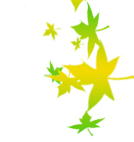Arnota Monastery – Bistriţa village
Founded by Matthew Basarab in 1633-1634, dedicated to the „Saint Archangels Michael and Gabriel”, it was built on the foundation of an older church. The porch with the tower was added by Constantin Brâncoveanu, at the beginning of his reign, along with the reparations, in 1705-1706. He also rebuilds the iconostasis, a real sculptural jewel, in the Brâncoveanu style (in 1913 it was taken to the museum of Brâncoveanu art in Mogoşoaia) and restores the painting, without replacing the original one.
The church of the monastery is a small building, with a simple and sober line, made after a trilobed plan, with polygonic apsis and an open porch. Above the nave there is a high tower and on the porch there is a smaller tower, the one set in Brâncoveanu’s time. The facades were divided, by an apparently brick belt, into two registers: the lower one, with beautiful rounded niches, and the upper one, where deep ocniţe were carved. The walls and the towers are decorated in elements of apparent brick. The restoration of the church was done in 1852-1856, by voyvod Barbu Ştirbei, who put down the old rooms of the monks, that went back to Matthew Basarab’ reign and were already in ruin, and built new buildings, based on the projects of some foreign architects.
In the pronave of the present church there are two graves: one is that of Matthew Basarab, who died on april the 9th, buried at first in Târgovişte and then brought to Arnota, after the rising of the “seimeni”; the second grave is that of Danciu vel-vornic, Matthew Basarab’s father, an ex-soldier of Michael the Brave, fell in the battles in Transylvania at Turda, buried in 1604 in Alba-Iulia, his remains being brought to Arnota in 1648.
This beautiful monastery is a representative historical and religious monument for Romania, on account of its painting, architecture and sculpture.


